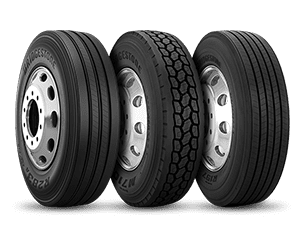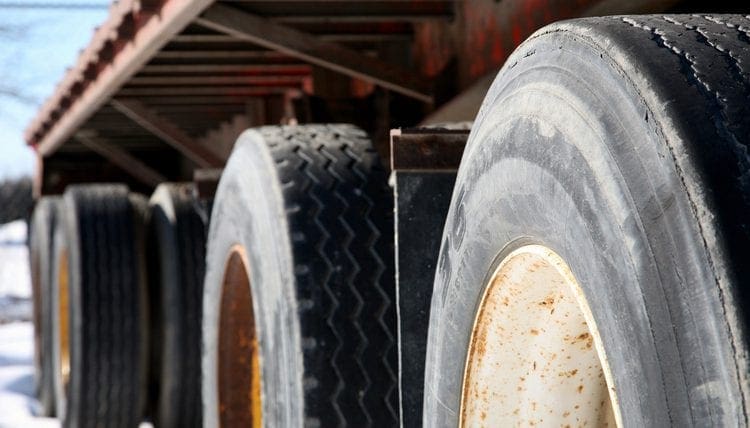“Know Your Roll” this National Tire Safety Week: May 21-28
May 21-28 is National Tire Safety Week, and now is a good time to review with your drivers the benefits of conducting thorough tire inspections during daily pre and post trip inspections. As fuel prices seem to be increasing the benefits of a good tire inspection not only pertains to safe vehicle operations but also means fuel savings for each and every unit operated.
Tires are designed to run at a given load and inflation pressure. Running 18 tires 30% under inflated will cost you 5% in actual vehicle fuel economy. 10% under inflation will be a ONE 1% penalty in fuel and 20% under inflation will be over 2% loss in fuel economy. Commercial motor vehicles that are used daily should have tire pressures checked daily.
In addition the tires on the commercial vehicle should be considered as an asset of the company that needs to be managed for optimal utilization and performance. Depending on the size and configuration of the commercial vehicle it is common to have between $3,000 and $6,000 of tires invested in each vehicle. During an inspection drivers should check air pressures with a calibrated Gauge. The practice of striking a tire with an object is not recommended and is inaccurate in determining inflation pressure. If the tire is under inflated only bad things will result.
 Irregular wear will develop, fuel economy will get worse, retread ability will be reduced, and tires will not reach their target removal miles. Drivers need to look for any signs of irregular wear which is an early warning sign for under inflation and/or vehicle alignment issues. The tire tread should be wearing smoothly. If not, a technician is needed to check out the vehicle. Drivers should rub their hand over the tire tread and sidewall, looking for any signs of punctures or damage. Drivers have an enormous impact on maximizing tire mileage.
Irregular wear will develop, fuel economy will get worse, retread ability will be reduced, and tires will not reach their target removal miles. Drivers need to look for any signs of irregular wear which is an early warning sign for under inflation and/or vehicle alignment issues. The tire tread should be wearing smoothly. If not, a technician is needed to check out the vehicle. Drivers should rub their hand over the tire tread and sidewall, looking for any signs of punctures or damage. Drivers have an enormous impact on maximizing tire mileage.
Is there a way I can tell the age of a tire?
Each tire has a US DOT Identification number. This number begins with the letters “DOT” and indicates that the tire meets all federal standards. The next two numbers or letters are the plant code where it was manufactured, and the last four numbers represent the week and year the tire was built. For example, the numbers 3197 means the 31st week of 1997. The other numbers are marketing codes used at the manufacturer’s discretion. This information is used to contact consumers if a tire defect requires a recall.
When is a tire placed out of service?
Answer: FMCSA regulations appendix G addresses tire out of service conditions on each commercial motor vehicle as follows:
Any tire on any steering axle of a power unit.
(1) With less than 4/32-inch tread when measured at any point on a major tread groove.
(2) Has body ply or belt material exposed through the tread or sidewall.
(3) Has any tread or sidewall separation.
(4) Has a cut where the ply or belt material is exposed.
(5) Labeled “Not for Highway Use” or displaying other marking which would exclude use on steering axle.
(6) A tube-type radial tire without radial tube stems markings. These markings include a red band around the tube stem, the word “radial” embossed in metal stems, or the word “radial” molded in rubber stems.
(7) Mixing bias and radial tires on the same axle.
(8) Tire flap protrudes through valve slot in rim and touches stem.
(9) Regrooved tire except motor vehicles used solely in urban or suburban service (see exception in §393.75(e)).
(10) Boot, blowout patch or other ply repair.
(11) Weight carried exceeds tire load limit. This includes overloaded tire resulting from low air pressure.
(12) Tire is flat or has noticeable (e.g., can be heard or felt) leak.
(13) Any bus equipped with recapped or retreaded tire(s).
(14) So mounted or inflated that it comes in contact with any part of the vehicle.
All tires other than those found on the steering axle of a power unit:
(1) Weight carried exceeds tire load limit. This includes overloaded tire resulting from low air pressure.
(2) Tire is flat or has noticeable (e.g., can be heard or felt) leak.
(3) Has body ply or belt material exposed through the tread or sidewall.
(4) Has any tread or sidewall separation.
(5) Has a cut where ply or belt material is exposed.
(6) So mounted or inflated that it comes in contact with any part of the vehicle. (This includes a tire that contacts its mate.)
(7) Is marked “Not for highway use” or otherwise marked and having like meaning.
(8) With less than 2/32-inch tread when measured at any point on a major tread groove.
First published on the Idealease Safety Bulletin

